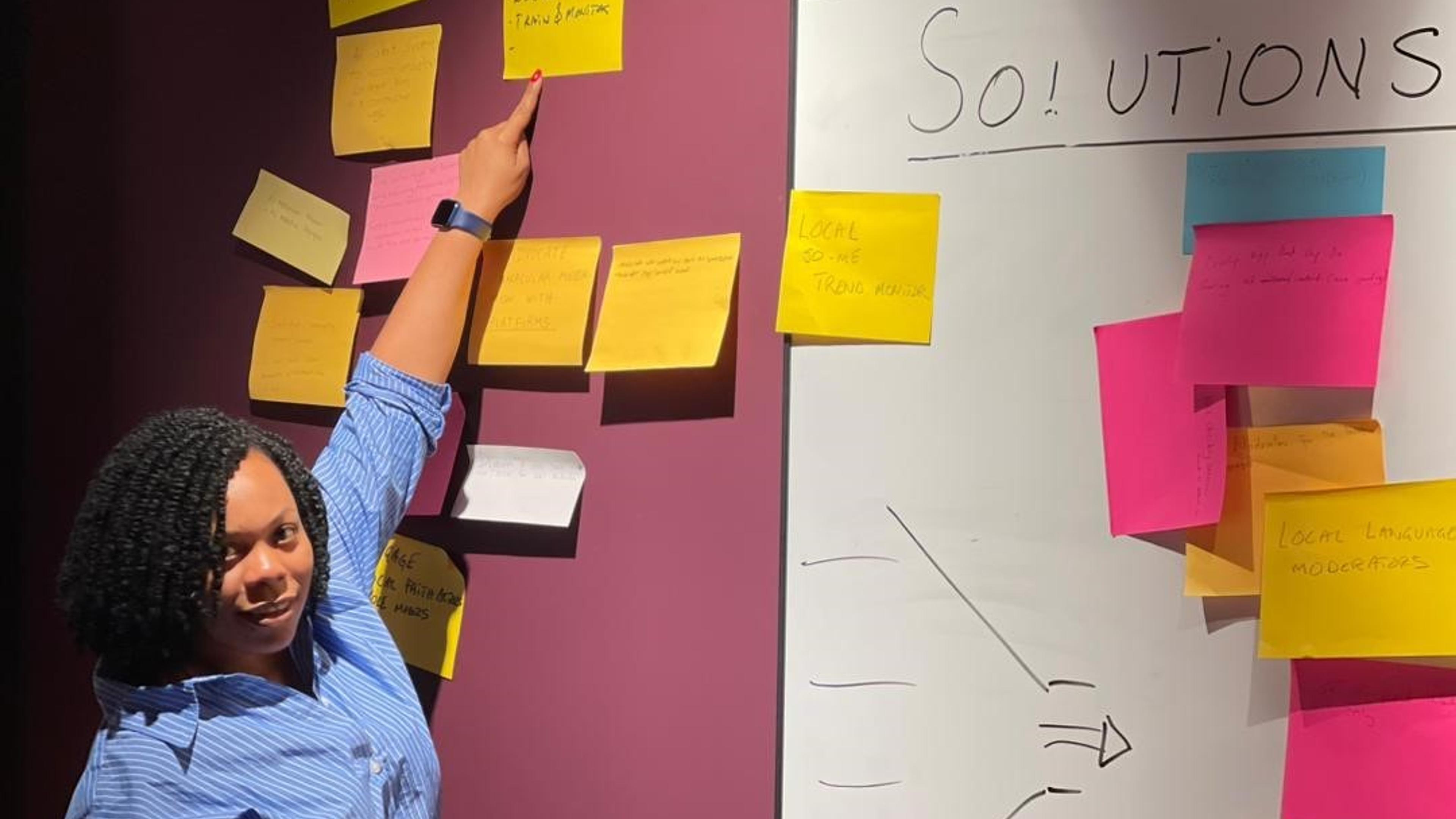ProTECHtion: Digitally powered community protection
 © Norwegian Church Aid
© Norwegian Church AidWhat is the challenge?
When communities are affected by violence, essential services are damaged and access is limited by security threats. Giving priority to the rapid set-up of new facilities and distribution of standard items such as food, but neglecting the importance of local solidarity, leads to eroding ownership and creation of dependencies.
Research shows that a strong sense of collective agency is key for communities to find their own effective solutions to these challenges. Hence, most humanitarian organizations use approaches which aim to support the communities’ own solutions. NGOs collect information about basic needs via surveys and create groups of community representatives who prioritise key risks and create action plans to address them. However, with the emergence of digital communication tools, the sector is experiencing a trust crisis with these traditional participation channels as people expect more transparency and direct participation. Current practices by aid actors has become outdated and potentially harmful to an effective emergency response because they fail to build trust and self-empowerment within the affected communities.
What is innovative about the project?
Through a participative design process, with community members from conflict affected communities, the project will explore the design of a digital “meeting place” for them to communicate with humanitarian actors.
This project will disrupt 4 paradigms of today’s humanitarian aid by:
- Renewing the communities’ ownership of their efforts to recover from violence by influencing aid projects directly, without being members of volunteer groups or having contacts in local administrations.
- Creating an open source of information about the communities’ needs and ambitions that is owned by the community and not by a foreign agent. This ensures the integrity of the data, reducing the risk of corruption or misuse of funding.
- Reducing the impact of local divisions and hierarchies when making community decisions by providing an open anonymous participation mechanism that focuses on the needs and wishes of the community instead of the interests of local influential stakeholders.
- Significantly cutting the risks and costs of household surveys, by allowing aid organisations to directly access contributions from community members, in a quick, cost-effective, secure, and transparent manner.
Combining a set of existing and to-be-developed digital solutions, this “meeting place” should improve the way communities are empowered and take ownership of assistance projects. Digital solutions that will be explored include a combination of non-polarizing social media algorithms, online surveys, A.I. powered online focus groups, e-voting, and e-participative budgeting. Technologies such as voice-to-text and text-to-voice can be used to improve accessibility of the most marginalised such as persons living with disabilities or illiterate individuals. The project will also explore the use of machine learning and A.I. to collect evidence from gathered data to inform humanitarian assistance projects and local public policies.
What are the expected outcomes?
The project seeks to impact the overall capacity of communities affected by conflict to protect their dignity and rights in times of violence. In particular, the solution should voice the urgent needs of those who are currently most marginalised from local decision-making such as persons with disabilities, ethnic minorities, and illiterate persons. In addition, the solution should have an impact on the capacity of grass-roots organisations and local authorities to provide more relevant services by communicating more transparently with the communities they serve.
Who are the project partners?
The project is led by Norwegian Church Aid, who will find one or more private sector partners to develop the solution.